Abstract
The electrical response of nitrate-grown maize (Zea mays L.) roots to 0.1 millimolar nitrate was comprised of two sequential parts: a rapid and transient depolarization of the membrane potential, followed by a slower, net hyperpolarization to a value more negative than the original resting potential. The magnitude of the response was smaller in roots of seedlings grown in the absence of nitrate, but, within 3 hours of initial exposure to 0.1 millimolar nitrate, increased to that of nitrate-grown roots. Chloride elicited a separate electrical response with a pattern similar to that of the nitrate response. However, the results presented in this study strongly indicate that the electrical response to nitrate reflects the activity of a nitrate-inducible membrane transport system for nitrate which is distinct from that for chloride. Inhibitors of the plasmalemma H+-ATPase (vanadate, diethylstilbestrol) completely inhibited both parts of the electrical response to nitrate, as did alkaline external pH. The magnitude of the initial nitrate-dependent, membrane potential depolarization was independent of nitrate concentration, but the subsequent nitrate-dependent hyperpolarization showed saturable dependence with an apparent Km of 0.05 millimolar. These results support a model for nitrate uptake in maize roots which includes a depolarizing NO3−/H+ symport. The model proposes that the nitrate-dependent membrane potential hyperpolarization is due to the plasma membrane proton pump, which is secondarily stimulated by the operation of the NO3−/H+ symport.
Full text
PDF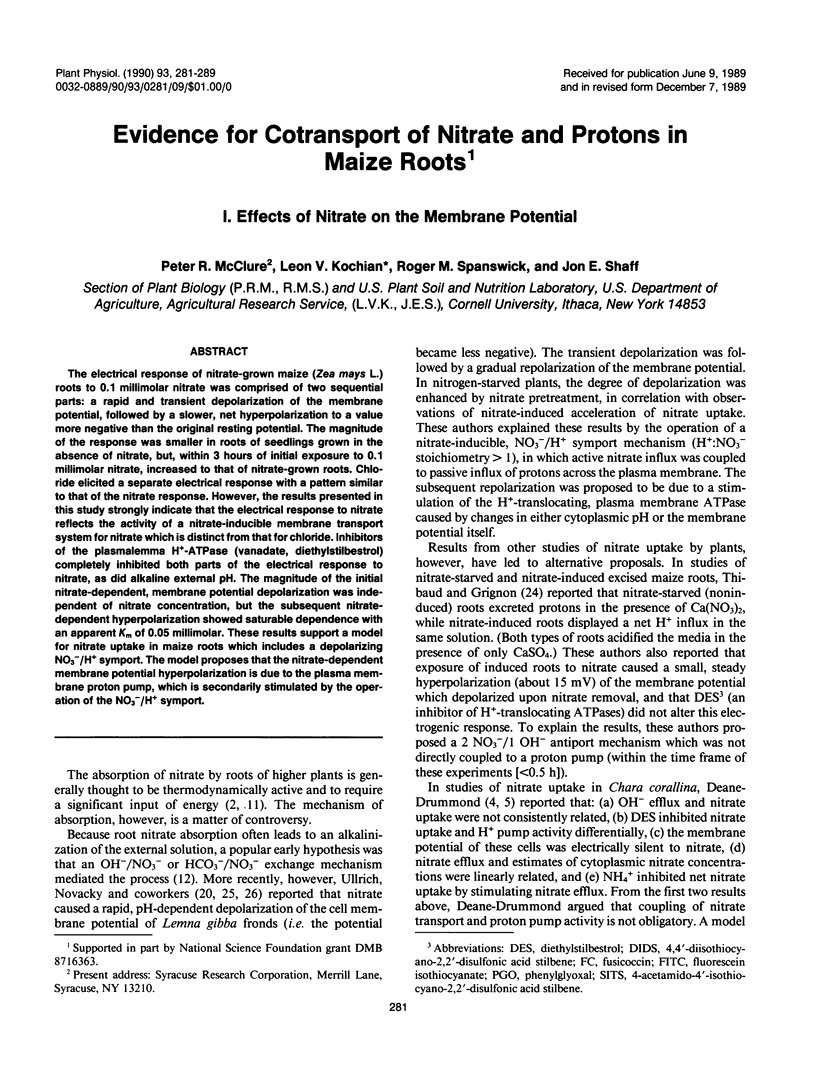
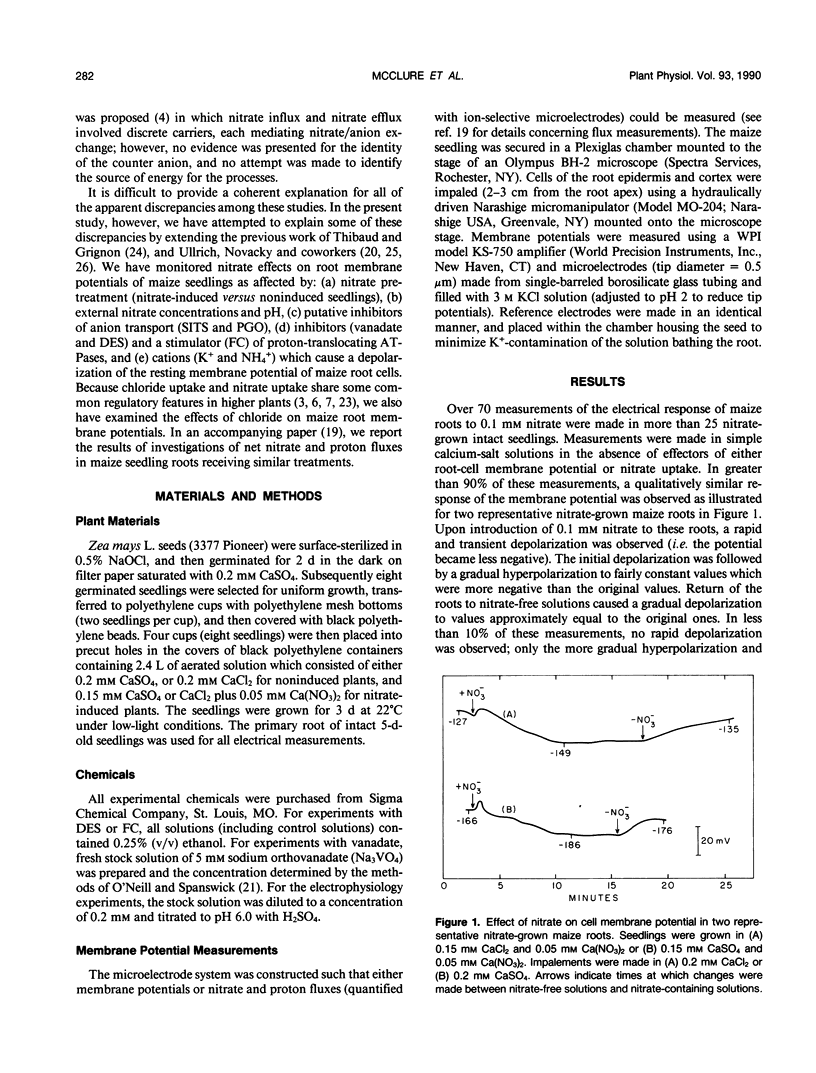
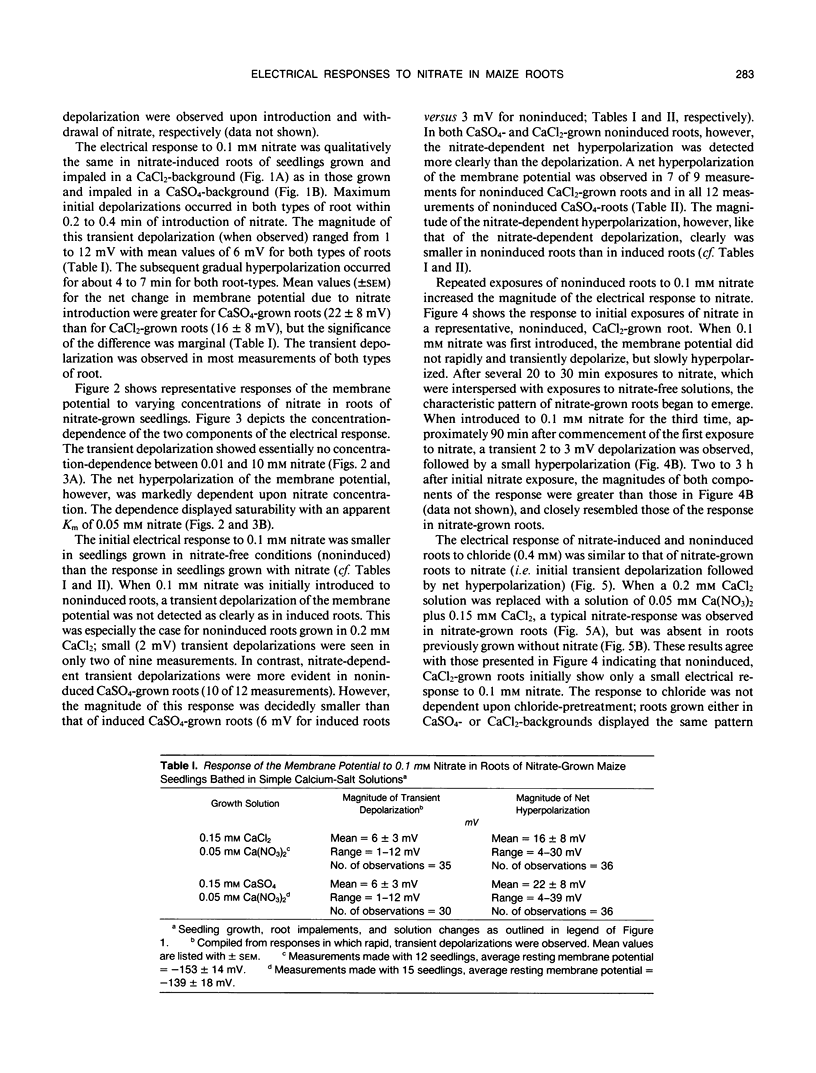
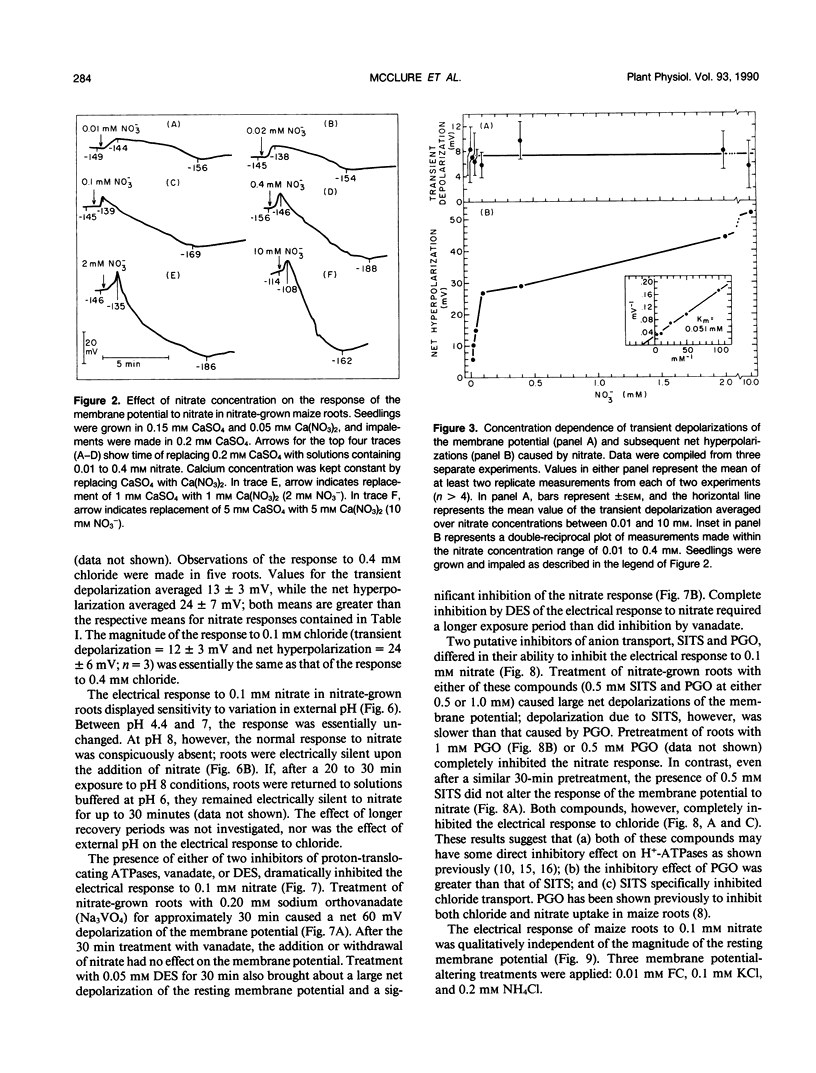
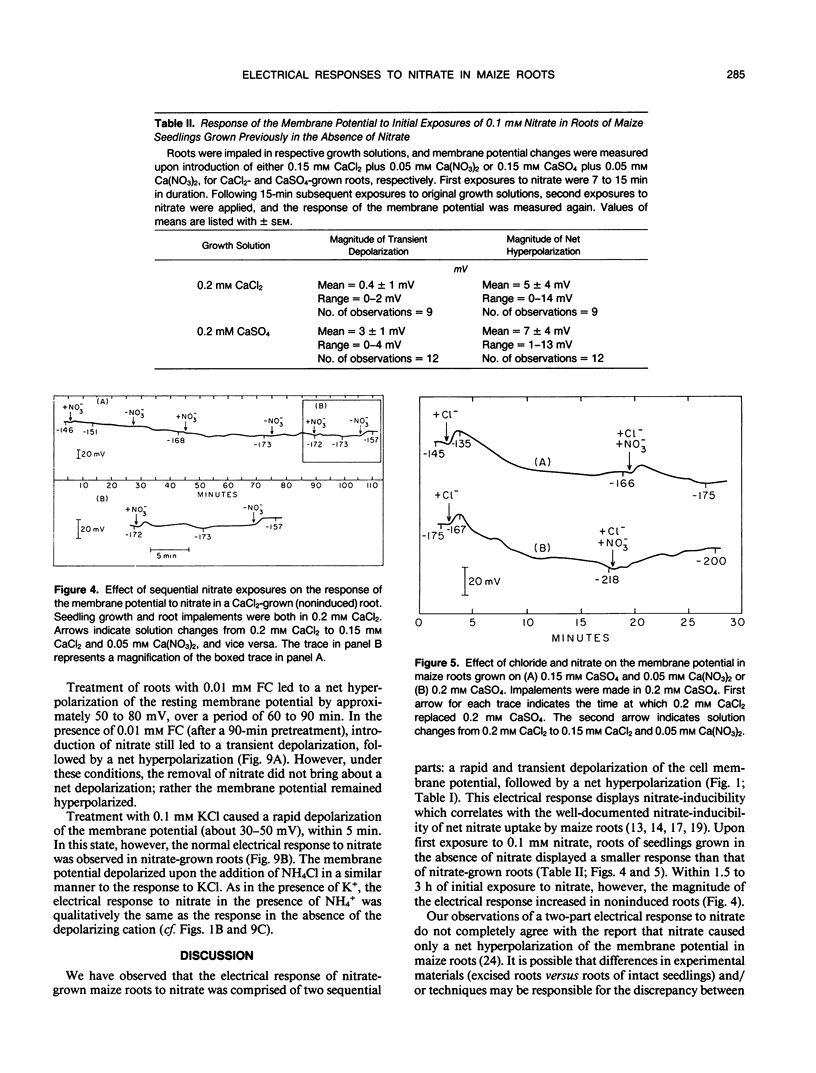
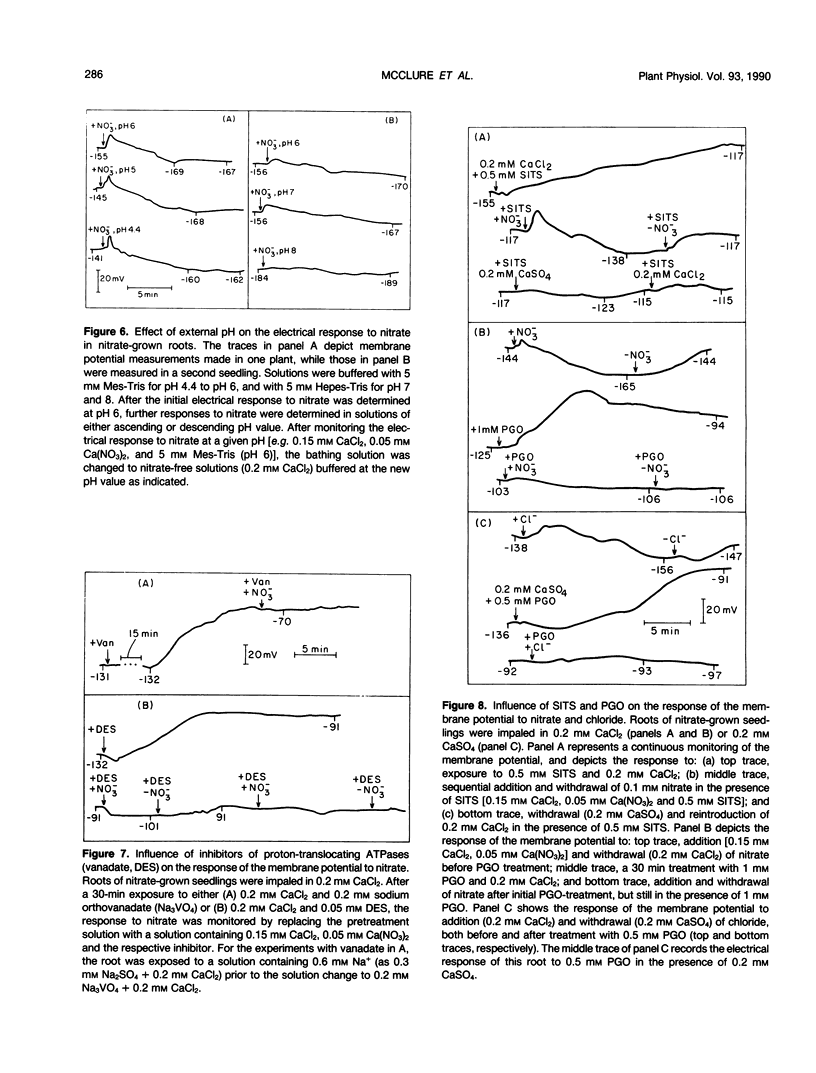
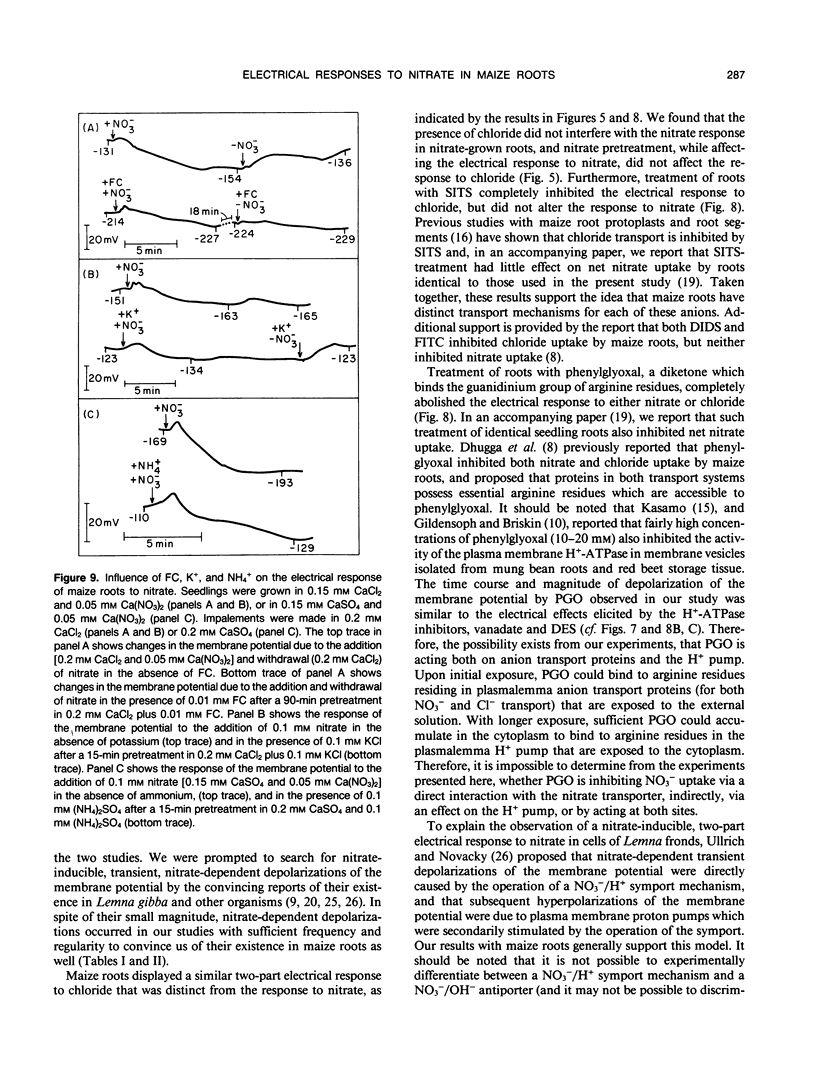
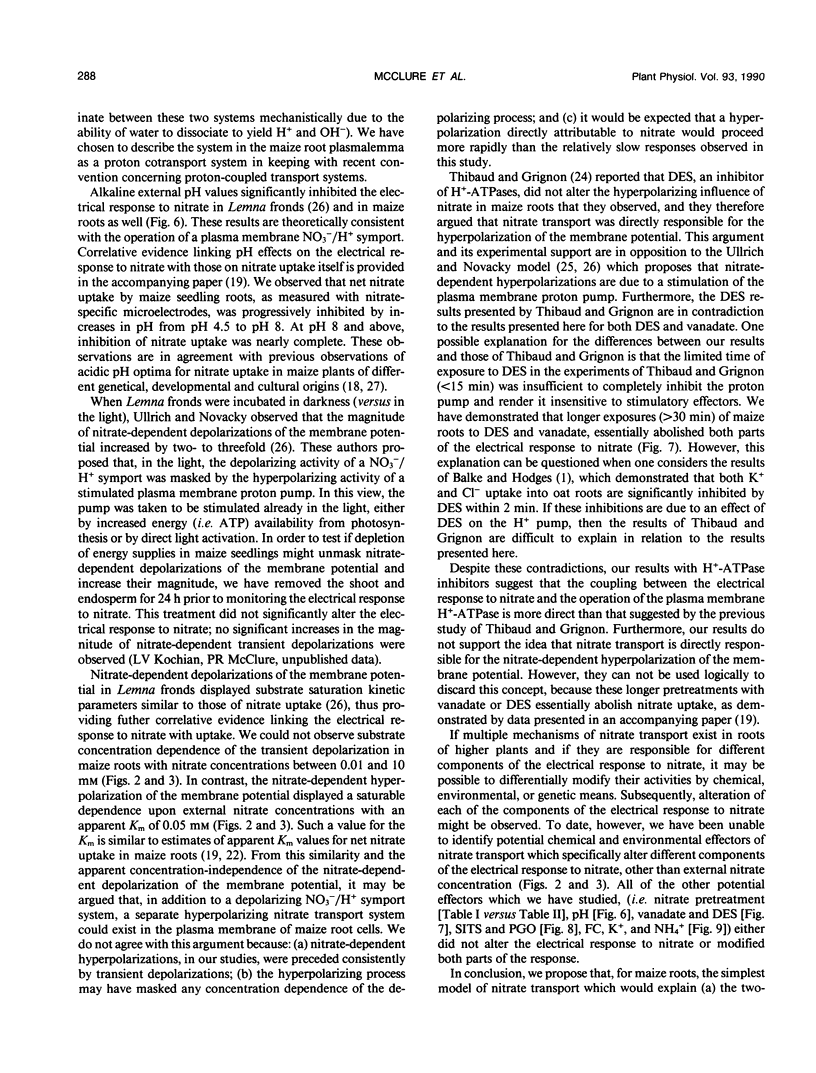
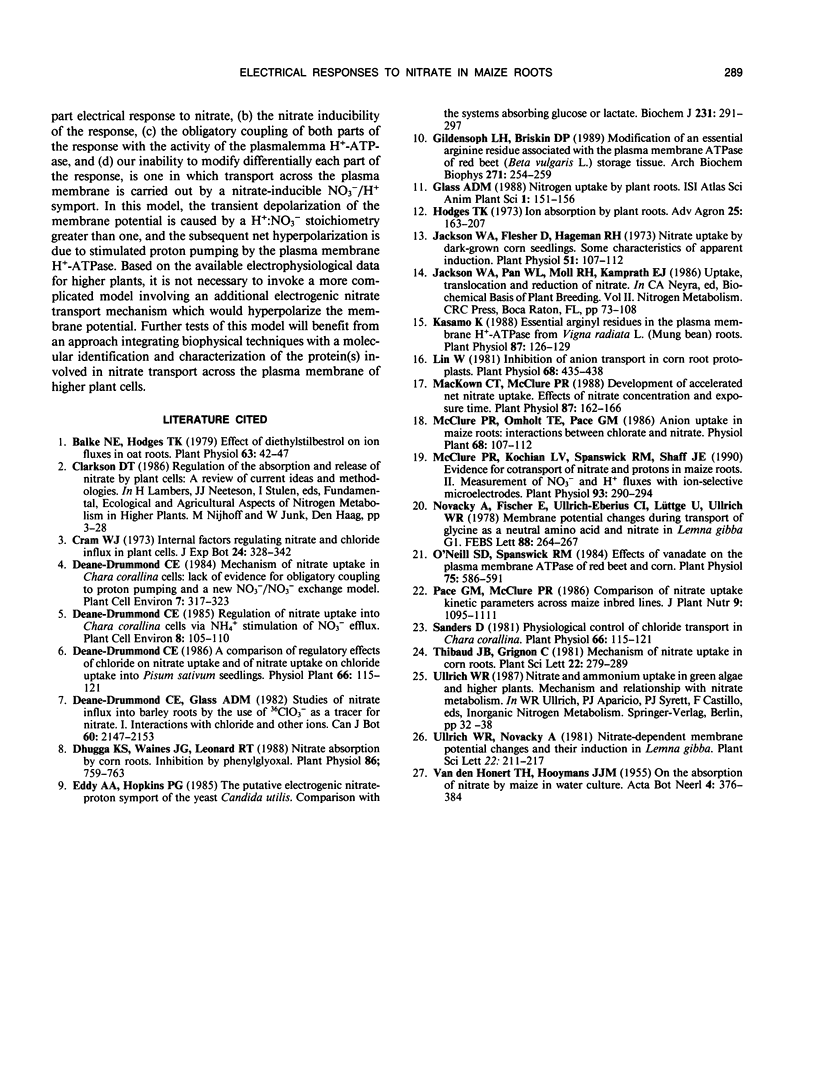
Selected References
These references are in PubMed. This may not be the complete list of references from this article.
- Balke N. E., Hodges T. K. Effect of diethylstilbestrol on ion fluxes in oat roots. Plant Physiol. 1979 Jan;63(1):42–47. doi: 10.1104/pp.63.1.42. [DOI] [PMC free article] [PubMed] [Google Scholar]
- Dhugga K. S., Waines J. G., Leonard R. T. Nitrate absorption by corn roots : inhibition by phenylglyoxal. Plant Physiol. 1988 Mar;86(3):759–763. doi: 10.1104/pp.86.3.759. [DOI] [PMC free article] [PubMed] [Google Scholar]
- Eddy A. A., Hopkins P. G. The putative electrogenic nitrate-proton symport of the yeast Candida utilis. Comparison with the systems absorbing glucose or lactate. Biochem J. 1985 Oct 15;231(2):291–297. doi: 10.1042/bj2310291. [DOI] [PMC free article] [PubMed] [Google Scholar]
- Gildensoph L. H., Briskin D. P. Modification of an essential arginine residue associated with the plasma membrane ATPase of red beet (Beta vulgaris L.) storage tissue. Arch Biochem Biophys. 1989 May 15;271(1):254–259. doi: 10.1016/0003-9861(89)90276-2. [DOI] [PubMed] [Google Scholar]
- Kasamo K. Essential Arginyl Residues in the Plasma Membrane H-ATPase from Vigna radiata L. (Mung Bean) Roots. Plant Physiol. 1988 May;87(1):126–129. doi: 10.1104/pp.87.1.126. [DOI] [PMC free article] [PubMed] [Google Scholar]
- Lin W. Inhibition of anion transport in corn root protoplasts. Plant Physiol. 1981 Aug;68(2):435–438. doi: 10.1104/pp.68.2.435. [DOI] [PMC free article] [PubMed] [Google Scholar]
- Mackown C. T., McClure P. R. Development of accelerated net nitrate uptake : effects of nitrate concentration and exposure time. Plant Physiol. 1988 May;87(1):162–166. doi: 10.1104/pp.87.1.162. [DOI] [PMC free article] [PubMed] [Google Scholar]
- McClure P. R., Kochian L. V., Spanswick R. M., Shaff J. E. Evidence for Cotransport of Nitrate and Protons in Maize Roots : II. Measurement of NO(3) and H Fluxes with Ion-Selective Microelectrodes. Plant Physiol. 1990 May;93(1):290–294. doi: 10.1104/pp.93.1.290. [DOI] [PMC free article] [PubMed] [Google Scholar]
- O'neill S. D., Spanswick R. M. Effects of vanadate on the plasma membrane ATPase of red beet and corn. Plant Physiol. 1984 Jul;75(3):586–591. doi: 10.1104/pp.75.3.586. [DOI] [PMC free article] [PubMed] [Google Scholar]


